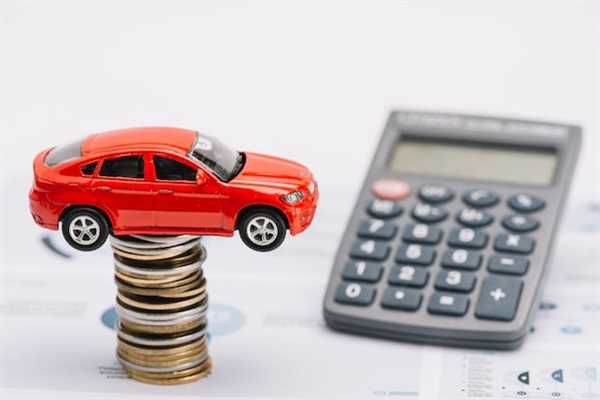
Researching specific auction houses is a crucial first step. Look for venues that specialize in the types of vehicles you’re interested in, whether it’s vintage models or more common options. Understanding their auction schedules and average prices will greatly assist in making informed choices.
Inspecting the vehicle prior to bidding can save frustration later. Always take the time to examine the condition, mileage, and any potential maintenance issues. Utilize checklists to evaluate every aspect, ensuring you do not overlook any critical detail.
Set a clear budget beforehand. Establish a maximum price you’re willing to spend, factoring in potential repairs and associated costs. This strategy enables you to remain disciplined during the bidding process, preventing impulse purchases and regrettable decisions.
Engage with experienced participants and gather insights about their bidding strategies. Observing how seasoned buyers approach auctions can reveal effective methods to enhance your own bidding techniques. Strong negotiation skills are advantageous, don’t hesitate to ask questions and clarify details about the auction items.
Save Money Buying Cars at Auction: Practical Tips

Research the auction details thoroughly. Know the date, time, and location. Visit beforehand to inspect vehicles if possible. Understanding the auction process and fees can prevent unexpected costs.
Set a strict budget before attending. Determine the maximum bid amount for each vehicle and stick to this limit to avoid overspending. Consider additional expenses like taxes and registration.
Focus on pre-owned vehicles with a reliable history. Utilize online resources to check vehicle reports and maintenance records. Look for models known for longevity and low service costs.
Attend multiple events to familiarize yourself with the bidding atmosphere. Observe how competitive bidding works and what prices similar models sell for. This experience can sharpen your strategy.
Bring necessary tools, such as a smartphone or tablet, to access pricing guides and reviews on the spot. Having comparison data aids in making informed decisions without delay.
Network with experienced attendees. They can provide insights into hidden gems or common pitfalls to avoid. Building relationships with sellers may also lead to better deals in the future.
Inspect each car thoroughly. Look for signs of wear, mechanical issues, and previous accident damage. Utilize a checklist to ensure nothing critical is overlooked during evaluation.
Be cautious of impulse buys. Stay calm, wait for the right moment to bid, and don’t get drawn into bidding wars that push prices beyond reasonable limits.
Consider partnering with a knowledgeable friend or mechanic. Their expertise can provide valuable input when assessing cars you are interested in purchasing.
Finally, review post-purchase plans. Account for upcoming repairs or improvements, and ensure you have a clear understanding of any necessary investments after the acquisition.
How to Evaluate Auction Cars Before Bidding
Inspect each vehicle thoroughly for signs of wear, damage, or rust. Check the exterior, under the hood, and inside for any issues that could affect functionality.
Research the specific model to understand its common problems, reliability ratings, and any recalls. Knowledge about typical maintenance costs helps in assessing value.
Review the auction listing carefully. Look for detailed descriptions and vehicle history reports. These documents reveal previous ownership, accidents, and service records.
Utilize online tools to assess market values of similar models. Comparing prices gives a clearer idea of a fair bid range.
Attend the auction in person if possible. Observing the car firsthand allows for a better assessment compared to photographs alone.
Ask questions to the auctioneer or seller about the vehicle’s condition, repairs, and any issues noted during prior reviews. Clear communication can uncover hidden details.
Consider bringing a knowledgeable friend or mechanic to provide expert insights. Their experience may identify issues easily overlooked.
Set a maximum bid based on your research and stick to it. Maintaining discipline prevents overbidding in the heat of the moment.
Lastly, be mindful of additional fees related to the sale. Understanding total costs ensures that the bid remains within your financial plan.
Understanding Auction Fees and Hidden Costs
Before participating in a bidding event, calculate all associated expenses beyond the vehicle’s final price. Registration fees are often required to bid and can range significantly across platforms.
Take into account the buyer’s premium, typically a percentage of the sales price, which can increase the total expenditure. Research the specific rates charged by each auction site.
Consider transportation fees for picking up the vehicle and potential costs for repairs or inspections post-purchase. Review the auction’s policy on hidden costs meticulously, as some may include documentation or transfer fees unseen at first glance.
Prepare for potential taxes applicable to the transaction, which can vary by location. Always inquire about any additional charges for services like temporary registration or title transfer.
To maximize value, maintain a thorough budget that includes estimated repairs and necessary fees. This approach helps avoid surprises and supports informed decision-making throughout the process of acquiring a pre-owned automobile.
Steps to Ensure a Successful Test Drive and Inspection

Prioritize clarity on the vehicle’s condition before committing to a purchase. Here’s how to approach the test drive and inspection process:
- Check the Exterior: Inspect for dents, scratches, or rust. Pay close attention to panel alignment and glass condition.
- Evaluate Tire Condition: Assess tread depth and look for any uneven wear. This can indicate alignment issues.
- Interior Assessment: Examine upholstery, dashboard functionality, and any signs of wear or damage. Check all electronic components.
- Engine Inspection: Open the hood to look for leaks or corrosion. Check the oil and fluid levels. A dipstick can reveal oil quality.
During the test drive, consider these actions:
- Listen and Feel: Pay attention to unusual noises or vibrations while driving. Test acceleration, braking, and steering responsiveness.
- Test Different Conditions: Drive in various conditions–highway, local streets, and inclines–to get a complete feel of performance.
- Check Technology and Features: Ensure all features function correctly. Test infotainment, navigation, and safety systems.
Document your findings for comparison later. This structured approach will facilitate informed choices at the point of decision, leading to a more rewarding experience in acquiring a pre-owned vehicle.



